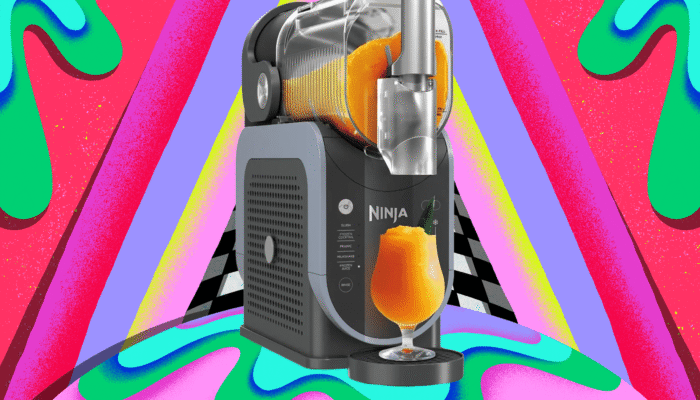The recent announcement from Valve of a new slate of hardware products has excited players, but while a revamped Steam Controller and an updated virtual reality headset, the Steam Frame, have drawn plenty of attention, the biggest buzz is around the new generation of Steam Machines.
Designed to sit under your TV as comfortably as it would under a monitor, these are micro PCs—but only because Valve seems shy of branding them consoles.
The new Steam Machines are Valve’s second attempt at launching a dedicated device to bring the PC into the living room. The first generation Steam Machines launched a decade ago, in November 2015, and while that iteration ultimately flopped, the marketplace in 2025 is much different.
The Steam Deck has been a huge success, inspiring a whole fleet of gaming handhelds—with even Xbox joining the party—and PC gaming as a whole is in a much stronger position.
So, when the announcement video for this new product family went to great lengths to explain that the new Steam Machine is still a PC and not a console, it shouldn’t be too much of a surprise. Valve makes and sells PC games; here’s a PC to play those games on. Except … c’mon, look at it: in every way that counts, the new Steam Machine effectively is a console—and that’s no bad thing.

Courtesy of Valve
Meet In the Middle
Pop quiz: what defines a games console? Traditionally, they’ve been devices manufactured by a single company, with a uniform hardware design, intended to play games developed specifically for that machine, most commonly on a big screen television.
The benefits include fixed specifications meaning developers know exactly what they’re building games for, and buyers knowing that any game they buy for that system will run (catastrophic bugs aside, of course). Roughly every half-decade, they might buy a new generation model.
What then defines a PC, gaming or otherwise? Almost the opposite—a typically desk-bound rig, built from whatever parts the user fancies, and when they need a bit more power, they can swap out the graphics card, or RAM, or even core CPU rather than buying a whole new rig. PC gamers aren’t beholden to a particular storefront to get their games, allowing them to shop around for better prices. The downside is that having no fixed specs invites bugs or crashes if some combo of parts doesn’t like each other—and even a single component can be thousands of dollars.
However, the line between the two camps has been blurring for years at this point, if not decades. Take game sales—physical game releases on PC are so vanishingly rare as to effectively no longer exist, but even console players barely purchase real-world copies nowadays.
Industry analyst Mat Piscatella highlighted in January 2025 that, as of 2024, physical video game sales in the US have halved since 2021 alone, and are at “more than 85 percent below its 2008 peak.” If players on PlayStation, Xbox, or Switch are predominantly buying their games through their respective digital stores, they’re already in the same habit as PC gamers. The only difference is the walled ecosystem of each platform, but even there, crossbuy and crossplay offers help mitigate that somewhat—I’ve personally been hopping between Switch 2 and PC for Hades II sessions of late.
Meanwhile, although PC players aren’t locked into a single digital store connected to their hardware, Steam has such dominance in the sector (its market share hovers around 75 percent, and GamesIndustry.biz found that 72 percent of game developers think Steam has an effective monopoly) that most players aren’t looking elsewhere for their games. The convenience of having a massive library in one place keeps them loyal, just like console players.
Then there’s the hardware side. The PC’s modularity is still a big selling point, but no longer an entirely unique one. Compare to PS5: off the shelf, it’s already available in a few form factors, allowing buyers to choose how much storage they want to start with, or whether to go straight for the all-powerful PS5 Pro. You could get a basic digital Slim PS5 and then later upgrade the SSD or bolt on a disc drive for physical games and 4K Blu-ray. Not quite the same as being able to swap around every PC component like Lego bricks, but it shows consumers are more familiar than ever with being able to tweak their consoles.
Looks Like a Duck, Quacks Like a Duck
Back to the new Steam Machine itself, then. As announced, it’s an unusually static piece of hardware for a PC. Valve promises a device capable of delivering “4K gaming at 60 FPS with FSR”—an upscaling algorithm—”thanks to a discrete semi-custom AMD desktop class CPU and GPU,” which doesn’t sound like users will be upgrading it after a few years.

Courtesy of Valve
It’s set to offer two internal storage capacities, with 512GB or 2TB SSDs, with storage further expandable via microSD. Valve seems to be approaching the external storage format as a glorified game cartridge, as players will be able to move a single card between Steam Machine, Steam Frame, and Steam Deck. That also indicates that current gen SDXC format cards will be usable, rather than requiring the newer, faster microSD Express format that the Switch 2 does to run games.
It also features 16GB DDR5 RAM, 8GB GDDR6 VRAM, a host of input/output options—DisplayPort 1.4. HDMI 2.0. One USB-C and four USB-A ports—and crams even its power supply into “a roughly 6-inch cube.” That’s about the size of Nintendo’s classic GameCube, or half an Xbox Series X. It’s cute! If you want to make it cuter, you can swap out the front face plate (not unlike the range of cosmetic PS5 shells, hmm …).
That’s all a far cry from the original Steam Machines, which stood out by not having a specific form factor. The Valve of 2015 instead set a minimum spec that any manufacturer could meet to label a device as a Steam Machine, a degree of confusion that no doubt hurt its wider adoption. The new generation is 100 percent a Valve product.
About the only commonality is that both generations have been designed around using SteamOS to navigate your game library (it’s set to run KDE Plasma for its desktop environment). Valve adds that it is expanding its “Deck Verified” program, which certifies games as being compatible with the handheld Steam Deck, “to include ratings for Steam Machine, so customers can understand how their games will run.”
So. A gaming PC that seems to offer only minimal hardware customization options, in a fixed form factor, produced by one manufacturer, with games designed to run on it. You know what that looks a lot like? A console. And that should be celebrated.
Convenience Wins
It’s easy to understand why Valve may not want to embrace the “console” label for Steam Machine. As arguably the biggest driving force in PC gaming, it’d practically be tearing up its own street cred to do so.
However, consoles remain popular precisely because of their comparative limits—for many players, being able to plug a box into their TV and enjoy games on a couch is just a nicer way to play. It’s more sociable, too, especially for local co-op games. Even hooking my gaming laptop up to a TV to play PC games with friends is more of a faff than turning on a console. Plus, given the extraordinary volume of games released on Steam—more than 18,500 in 2024—why wouldn’t you want to make them more comfortable and accessible?
Valve is even leaning into the living-room setup with the updated Steam Controller, which will be able to wake the Steam Machine from sleep. Up to four controllers can be wirelessly paired with a Steam Machine, too, just like every other console presently on the market.

Courtesy of Valve
Meanwhile, SteamOS has been refined over the years, and now its “Big Picture Mode” feels a lot like using PlayStation or Xbox’s core interfaces. I’d actually argue it’s better, lacking the ads and extra services those platforms constantly push, simply giving players a clean, bold view of their game libraries and a store to browse. Although Valve stresses that you can “install your own apps, or even another operating system,” I’d be quietly amazed if many buyers end up taking that latter option. Installing a media server under the SteamOS hood is perhaps more likely, I’d wager.
Of course, I may eat crow on all this once the new Steam Machine’s launch in 2026. Maybe you will be able to somehow squeeze in a beefier graphics card, or dock one externally to give the base hardware a boost. Perhaps that “semi-custom AMD desktop class CPU and GPU” chipset will be upgradeable. I’d actually be surprised if the internal storage isn’t replaceable, since you can already do that on Steam Deck (even though it requires quite a bit of tinkering). Maybe people will install their own OS en masse on it, perhaps to escape the increasingly AI-infested world of Windows.
Mainly, though, I foresee the vast majority of people who pick up a Steam Machine using it exactly as they would any other console—plugging it in, picking up a controller, kicking back, and enjoying games on in the living room. What could be better?




